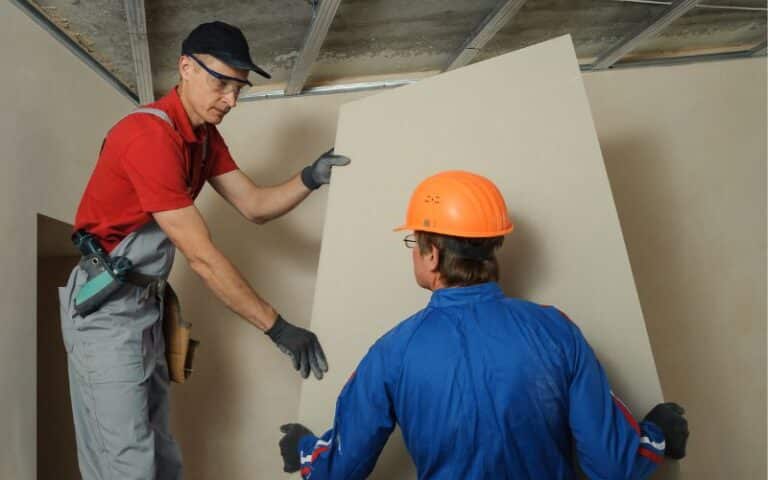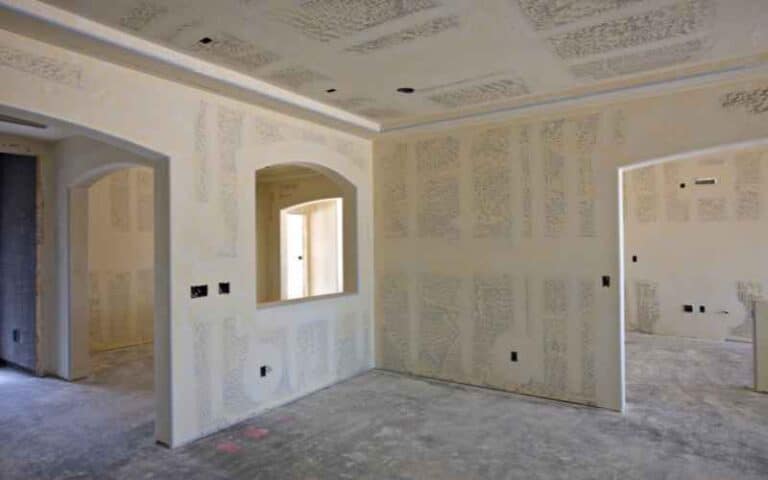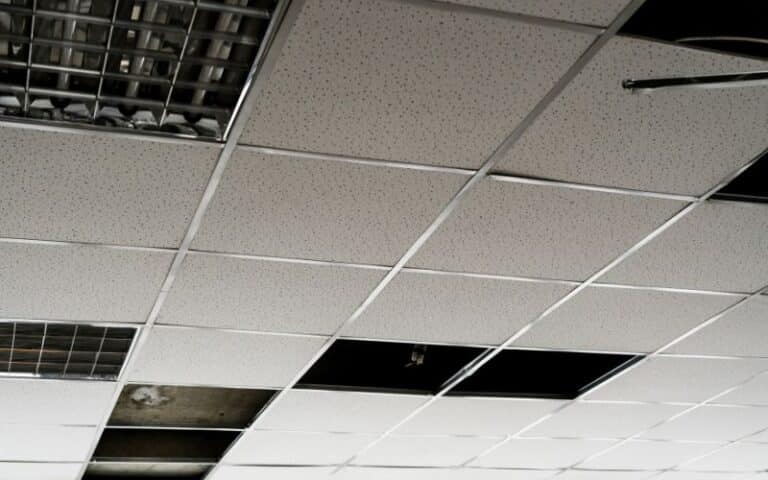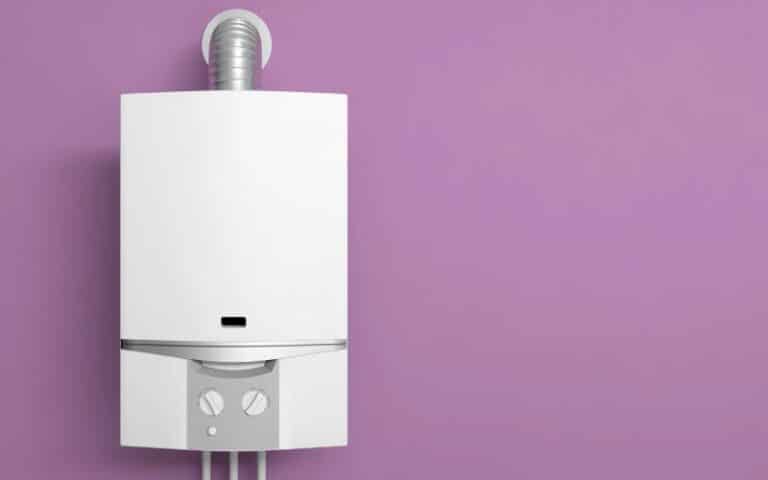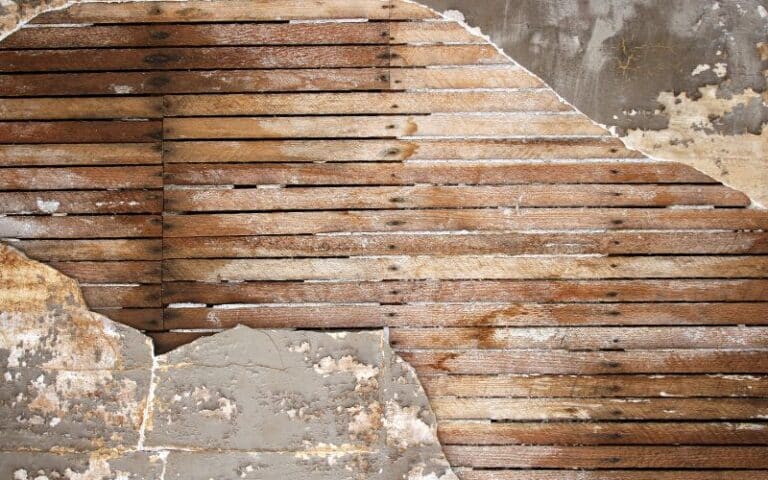Transitioning between different materials can sometimes be challenging in interior design and construction.
One area where you are most likely to encounter challenges is the transition between drywall and wood surfaces, such as where a wall meets a wood-paneled ceiling.
Meanwhile, achieving a seamless and visually appealing transition between these materials requires careful planning and execution, hence the reason to have basic knowledge about it.
There are several factors to consider when working with drywall-to-wood transitions. One is the thickness and texture between the two materials, and another consideration is the type of transition desired. When transitioning from drywall to wood, you can use a transition molding, baseboard, wooden wainscot, chair rail, wood accent wall, etc.
In this article, I will explore the various options for transitioning from drywall to wood. I will further explain the various ways of transitioning from drywall to wood.
In addition, I will offer tips on achieving a beautiful and seamless transition that will enhance the look and feel of your home.
Ready for a Drywall Quiz?
How Do You Transition from Drywall to Wood?

You can transition drywall to wood in a few different ways, depending on the specific situation and how you want the outcome to look.
Below are some of the common options that can provide a clean and professional-looking transition from drywall to wood:
#1. Install a Transition Molding
Installing molding is one of the most common ways to transition from drywall to wood.
Transition molding is a type of trim piece that contractors commonly use to bridge the gap between two different types of flooring, or in this case, between drywall and wood.
Depending on your preferred outcome, you can use different molding styles, such as baseboards, crown molding, or quarter-round.
Therefore, to install a transition molding, measure the length of the wall where you want to install the molding and the distance between the two surfaces.
Then, cut the molding to fit, and use finish nails and a nail gun to install it to the wall; you can also use adhesive as an alternative.
#2. Use a Baseboard
A baseboard is a type of molding that runs along the bottom of a wall and covers the joint between the wall and the floor.
To use a baseboard to transition from drywall to wood, All you need to do is to measure the distance between the two surfaces.
After the measurement, cut the baseboard to size and then attach it to the wall using nails or construction adhesive.
#3. Install Wooden Wainscot/Paneling
Another option for transitioning from drywall to wood is to install a wooden wainscot on the lower portion of the wall, covering the transition from drywall to wood.
A wainscot is a type of paneling made from different materials, including wood. Contractors mostly install a wainscot on the lower half of a wall.
To install a wooden wainscot, you only need to measure the drywall’s length, cut the panels to size, and then install them to the wall using nails or construction adhesive.
#4. Install a Wood Accent Wall
Another way to transition from drywall to wood is to install a wood accent wall. Installing a wood accent wall is an excellent option to add a rustic or natural element to your space.
You can use reclaimed wood or purchase new wood planks from a home improvement store.
To transition your drywall to wood, measure it and cut it to size once you get your wood. Then, attach it to the wall with nails and a nail gun.
#5. Install a Chair Rail
Chair rail install action is another way to transition from drywall to wood, providing an elegant touch to your space.
A chair rail is a horizontal molan ding that runs along the wall, typically at the height of a chair’s back. You can use several materials for the chair rail, wood, metal, or vinyl.
To install a chair rail, measure the length of the wall, cut the chair rail to fit, and attach it to the wall using nails.
Meanwhile, you may be curious about the pros and finishes of transitioning from drywall to wood; check out the table below.
| Pros | Cons |
|---|---|
| Wood is a good temperature insulator. | Wood installation can be more complicated than drywall installation. |
| Wood is generally more durable. | Transitioning from drywall to wood can be time-consuming, especially for a first-timer. |
| Wood is soundproofing, reducing noise and creating a more peaceful environment. | Wood is more susceptible to moisture damage than drywall, which can lead to mold, rot, etc. |
| Wood’s unique natural beauty can add warmth and charm to any space. | Wood may not be readily available or more expensive than drywall. |
| Wood is a renewable resource that can be sustainably harvested and replanted. | Wood is less fire-resistant than drywall and can pose a greater risk in a fire. |
What Goes Between Drywall and Wood?
Depending on the specific application and requirements, contractors use different materials between drywall and wood.
Below are some of them:
#1. Studs
One of the things that go between drywall and wood is studs. Studs are vertical wooden framing members sized at regular intervals to create the structure of a wall.
The drywall is then attached to the studs using screws or nails, and the wood can be used as the framing for doors, windows, or other features.
#2. Insulation
Another material that goes between drywall and wood is insulation. You can add insulation between the studs for added energy efficiency and soundproofing.
Therefore, to improve a wall’s thermal or acoustic insulation, install fiberglass batts or another type of insulation between the studs before hanging the drywall.
#3. Vapor Barrier
A vapor barrier is another material that goes between drywall and wood.
During construction, installing a vapor barrier between the drywall and the wood may be necessary to prevent moisture from penetrating the wall.
You can create the vapor barrier using a plastic sheet or special paper.
#4. Sheathing
Sheathing can also go between drywall and wood. If you are installing drywall on an exterior wall, you may need to install a layer of sheathing (such as plywood or OSB) over the studs.
The purpose of the sheathing is to provide additional structural support and create a flat surface for the drywall to attach to.
#5. Joint Tape and Compound
Immediately after the drywall installation, contractors use joint tape and compound to cover the seams and create a smooth and professional-looking surface.
The joint tape and compound help to hide the seams between the individual drywall sheets and help create a seamless finish.
What Are the Best Methods for Installing an Electrical Box on Drywall Without a Stud?
When it comes to electrical box installation on drywall without a stud, there are a few useful tips to keep in mind. First, consider using toggle bolts or molly bolts for added support. Alternatively, installing a wall anchor can provide stability. Another method involves using metal mounting brackets specifically designed for drywall. These electrical box installation tips ensure a secure and reliable hold for your electrical box even without a stud.
Can You Blend Drywall into Wood?
Blending drywall to wood isn’t recommended and advisable because they are two different materials, each with unique properties.
A drywall, or drywall board, is a flat sheet of gypsum plaster and paper. Drywall is commonly used as a wall or ceiling covering in residential and commercial construction.
Wood, on the other hand, is a porous and fibrous organic material that is commonly used in construction for framing, flooring, and structural components.
So, if you intend to blend drywall into the wood, it’s essential to note that the act isn’t advisable as it can affect the stability of both materials.
In contrast, if you want to create a seamless transition between drywall and wood surfaces, it would be best to use trim or molding to cover the joint where the two materials meet.
What Goes First; Drywall or Hardwood?
If you are renovating or building a home, installing the drywall before the hardwood is generally recommended.
The reason is that drywall installation can be a messy process that can produce a lot of dust and debris, damaging or scratching the hardwood.
In addition, installing hardwood after the drywall gives room for a better fit and finish, creating a seamless and professional look.

